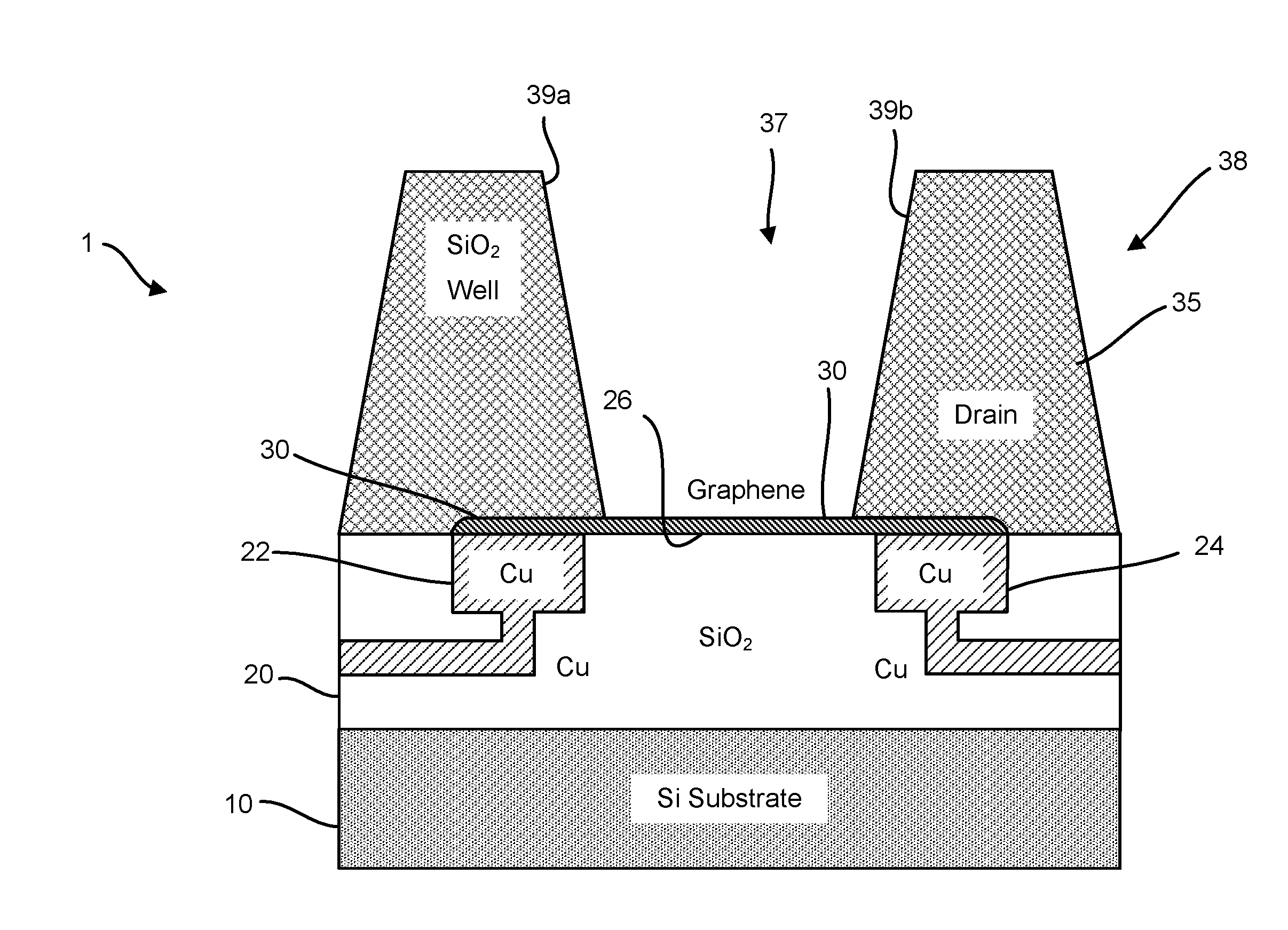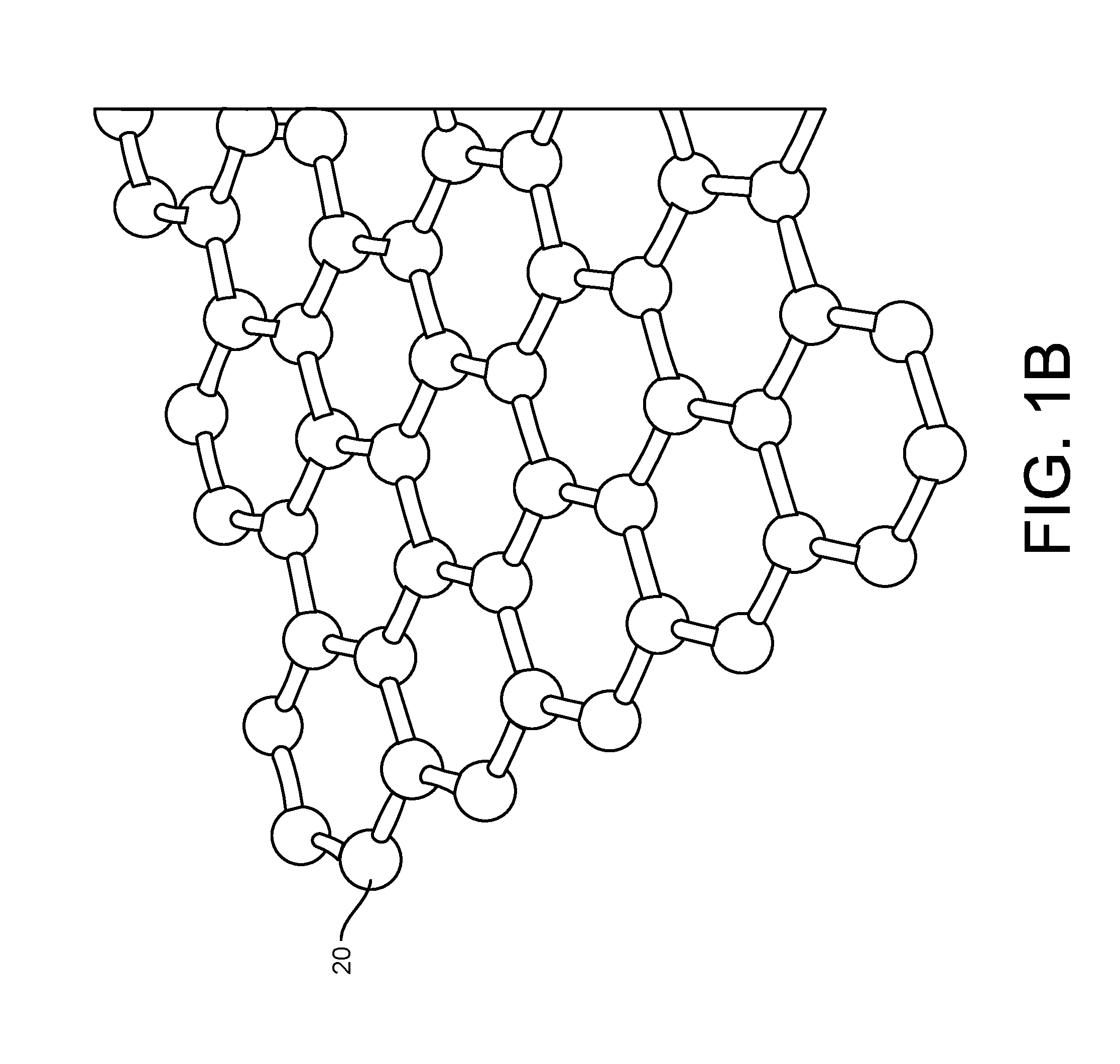Graphene fet devices, systems, and methods of using the same for sequencing nucleic acids
a technology of graphene transistors and fets, which is applied in the field of field effect transistors, can solve the problems of increasing the amount of sample preparation resources and time, the time and effort that goes into building such full-length genomic sequences and determining, and the method employed in sequencing protocols does not produce full-length dna chromosomal sequences
- Summary
- Abstract
- Description
- Claims
- Application Information
AI Technical Summary
Benefits of technology
Problems solved by technology
Method used
Image
Examples
Embodiment Construction
[0110]Accordingly, provided herein are devices, systems, and methods of employing the same for the performance of one or more chemical and / or bioinformatics analysis operations. Particularly, the devices, systems, and methods of the disclosure are directed in part to 1D, 2D, or 3D field effect transistor (FET) sensors, integrated circuits, and arrays employing the same for analyte measurements. The present FET sensors, arrays, and integrated circuits may be fabricated using conventional CMOS processing techniques based on improved 1D, 2D, or 3D FET sensor and array designs that increase measurement sensitivity and accuracy, and at the same time facilitate significantly small sensor sizes and dense sensor array designs.
[0111]More particularly, such improved fabrication techniques employing 1D, 2D, e.g., graphene, or 3D materials as a reaction layer provide for rapid data acquisition from small sensors to large and dense arrays of sensors. Such arrays may be employed to detect the pre...
PUM
| Property | Measurement | Unit |
|---|---|---|
| Length | aaaaa | aaaaa |
| Length | aaaaa | aaaaa |
| Width | aaaaa | aaaaa |
Abstract
Description
Claims
Application Information
 Login to View More
Login to View More - R&D
- Intellectual Property
- Life Sciences
- Materials
- Tech Scout
- Unparalleled Data Quality
- Higher Quality Content
- 60% Fewer Hallucinations
Browse by: Latest US Patents, China's latest patents, Technical Efficacy Thesaurus, Application Domain, Technology Topic, Popular Technical Reports.
© 2025 PatSnap. All rights reserved.Legal|Privacy policy|Modern Slavery Act Transparency Statement|Sitemap|About US| Contact US: help@patsnap.com



